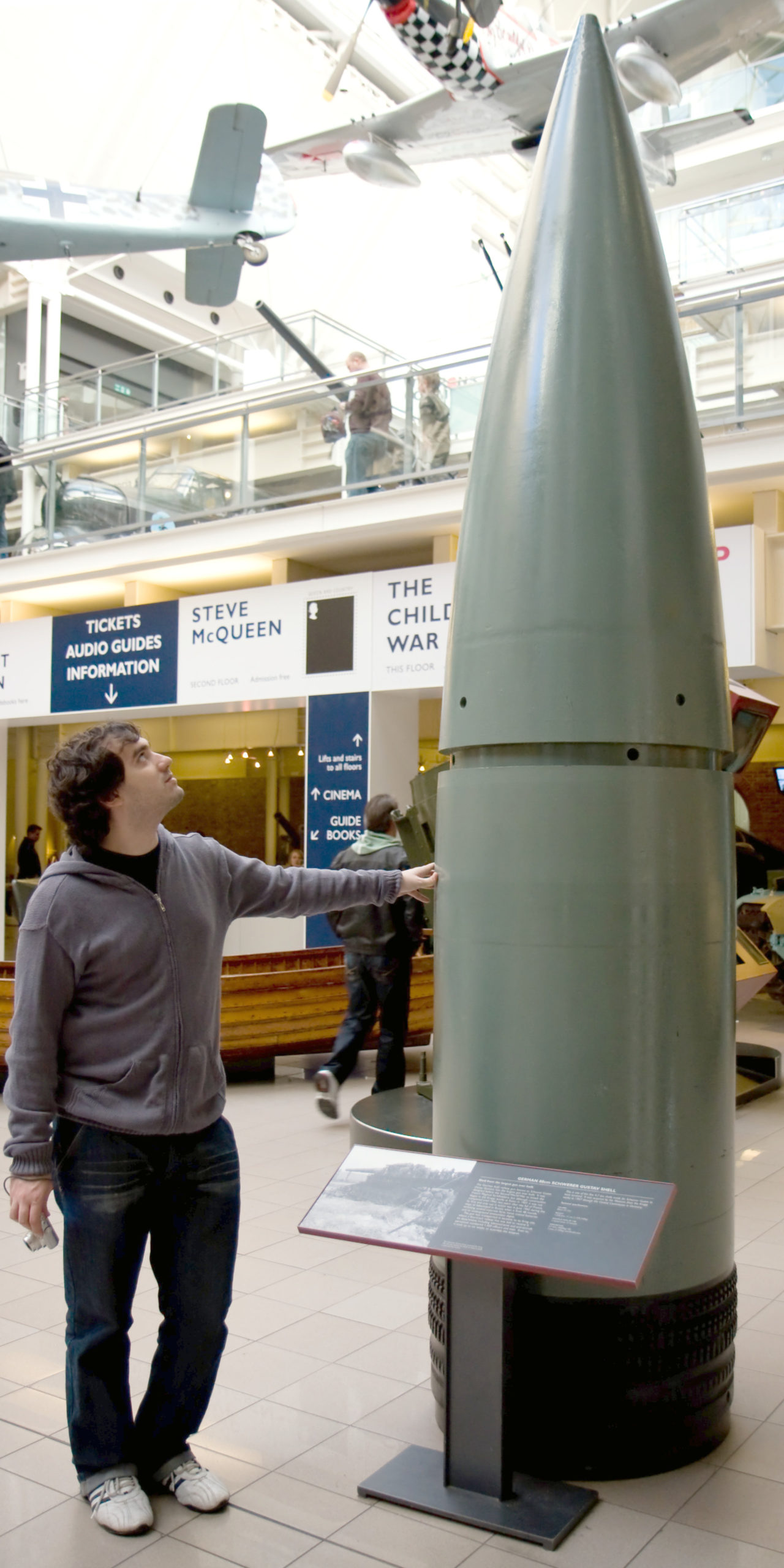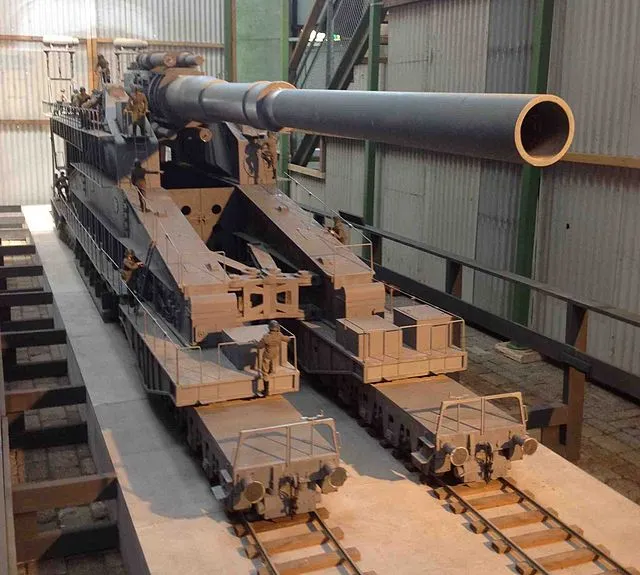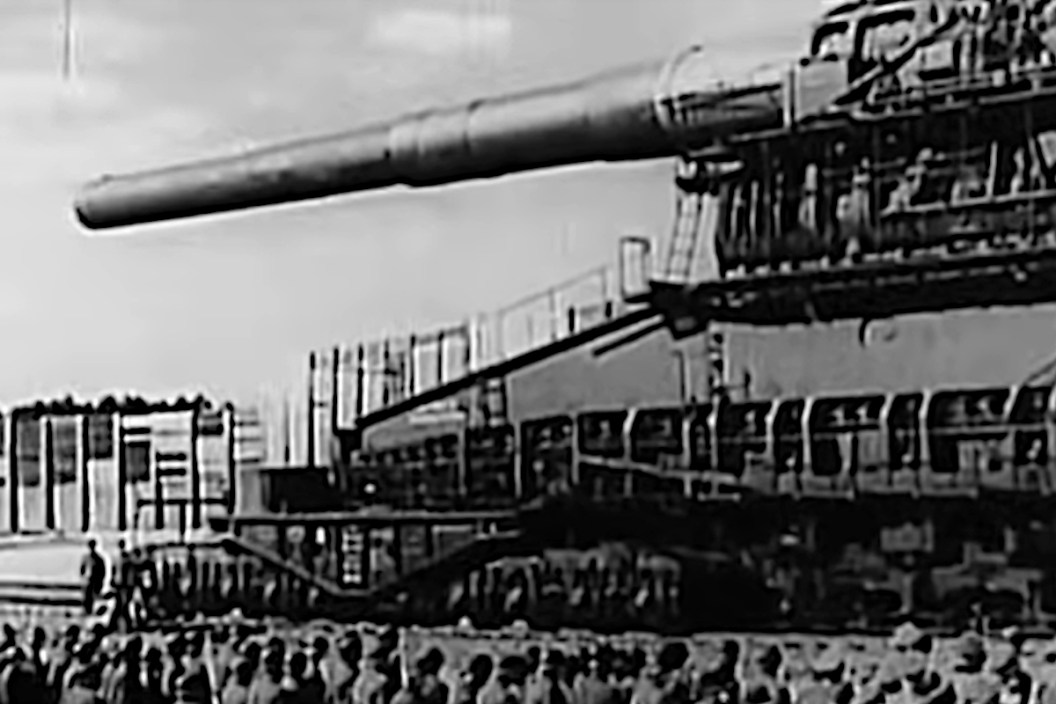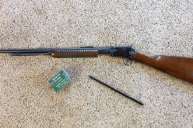The Schwerer Gustav was so big it was impractical.
World War II was a vital time in firearms and military history. With all the world's powers trying to get an edge over one another, many firearms technologies still in use today were created out of pure necessity. Of course, not everything can be as groundbreaking as the M1 Garand or the M1A1 rifle.
Such is the case of the Schwerer Gustav railway gun built in Nazi Germany in the early years of the war. It was the single biggest gun mankind has ever created, capable of ranges and destruction on a scale never seen before or since.
Fortunately for the rest of the world, the German Army's super gun was not only their biggest engineering marvel. It was also their largest failure. This is the fascinating history behind the largest artillery piece ever built and used in combat.
What was the Schwerer Gustav designed for?
To set the scene for the biggest gun ever built, we need to look at France in the 1930s. Political tensions were rising fast, and the French knew it was probably only a matter of time before Adolf Hitler and the Wehrmacht (German armed forces) attempted an invasion. With the horrors of the bloody trench warfare of World War I still fresh on the minds of many in France, the French Maginot Line was constructed as a form of defense against any sort of Blitzkrieg fast attack. The French hoped this line would then divert the attack into neighboring Belgium where France's troops would deal with the Nazis there.
The Maginot Line was one of the most impressive military fortifications ever built. The French started building it in 1929 and by 1938, they had secured hundreds of miles of reinforced concrete bunkers, blockhouses, anti-tank and machine gun placements, observation posts, troop shelters, anti-tank rails, artillery, and even an underground railway system to supply it all. Troops stationed on the line enjoyed fortified barracks and even air conditioning which made their jobs easier.
Because much of the line was reinforced with as much as 22 feet of concrete, rumors began to spread that the line was unbreakable. Strategists with Oberkommando des Heeres (OKH), also known as German High Command, realized the only way to bust such a fortified position was with a gun larger than any the world had ever seen.
The design of the Schwerer Gustav
German High Command first started looking into a gun large enough to break the Maginot Line in 1934. To design and build such a weapon, they turned to their primary arms supplier, Krupp, a steel products and arms manufacturer founded by the prominent and wealthy Krupp family back in the 1880s. One of their engineers, Erich Muller, who is usually credited with being the first designer on the project. Muller realized the gun would have to be moved via railway tracks just because of the monstrous specs of a weapon large enough to penetrate concrete and steel deep underground. While the company came up with multiple sets of plans, nothing much else happened on the project until 1936 when Hitler inquired into the project personally.
The final design Krupp came up with was an 80cm (31 inch) diameter gun with a whopping 106-foot long barrel which delivered rounds weighing approximately 7 tonnes or over 15,000 pounds. The gun had a blistering muzzle velocity of nearly 2,700 feet per second. These 800mm high-explosive shells were taller than two full-grown men and had a maximum range of 29 miles. Because a gun of this magnitude had never been built before, the engineers ran into many problems during construction when the first gun started production in 1937.

Wikimedia Commons: Daniel Perez
The project took so long that it missed the invasion of France completely! The Battle of France began in May of 1939 and was over by June. The German's new super weapon did not even see its first test firing using an improvised gun carriage until September of 1941. Once testing was completed, the barrel was then mounted to a specialized railway car with eight bogies (a railcar wheel chassis), which was the only way to move the massive gun since the entire package weighed a jaw-dropping 1,350 tonnes or 1,490 short tons. Approximately 80 rail wheels were needed to support that massive weight and the entire package sat on two sets of tracks. With the rail car base, the entire weapon was 155 feet, 2 inches long and 38 feet high.
The Schwerer Gustav (Heavy Gustav) name comes from Krupp's director at the time, Gustav Krupp. The company did not even charge the German army for the first gun. Krupp did allegedly charge the army about seven million Reichsmark, or the equivalent of $24 million U.S. today for a second version of the gun. The second gun was simply called "Dora" after one of the engineer's wives. However, history is a bit muddled on Dora. Legend has it that the gun was shipped and served in Stalingrad, Russia in 1942. After that, no one seems to know quite what happened it. Which is wild to think about considering a 155-foot gun is not something one is likely to misplace! However, rumors abound that the Germans withdrew Dora and later destroyed it themselves to prevent the Red Army from seizing it, which seems to make the most sense.
There is another rumor that Dora never existed and that was simply the nickname for the original Schwerer Gustav. Until someone comes up with concrete proof there were two separate guns, the world may never know for sure.
What year did the Schwerer Gustav first enter service?

Wikimedia Commons: Zandcee
While the gun had missed its original intended purpose, it seems Hitler wanted to use it anyway and he saw the invasion of the Soviet Union as the prime opportunity to unleash its destructive powers. In 1942, the Schwerer Gustav was shipped to the Eastern Front in Crimea for participation in the Siege of Sevastopol. It took nearly five weeks before the gun was in place and ready to fire. The Germans then started pounding Soviet targets on June 5, 1942. The gun fired just 48 times before its barrel became worn out and needed replacing. After replacement, the large gun was fired nearly 300 times in total during the siege.
By the battle's end, the Schwerer Gustav had destroyed ammunition dumps hidden deep underwater. It had knocked huge gun turrets out of commission, and it had annihilated several fortified forts. That battle over, the Nazis packed the gun up again and shipped it to Leningrad in preparation for another major attack. However, that attack never happened and fortunately for the rest of the world, the Gustav never saw combat again.
Does the Schwerer Gustav still exist?

Wikimedia Commons: United States Army
The fate of the original Schwerer Gustav is somewhat shrouded in mystery. We know the gun was stored near Leningrad until around 1943. Sometime before the end of WWII, the Germans apparently shipped the gun back to Germany because on April 22, 1945, American troops discovered the destroyed remains of the Schwerer Gustav hidden in the woods outside Auerbach, Germany. It is believed the Nazis destroyed the gun themselves to keep it from falling into Allied hands.
Still another version of the Gustav, albeit slightly smaller, was in development by the Germans called the Langer Gustav. This version of the gun had a 20.5-inch wide barrel that was a staggering 141-feet in length. It is believed this barrel would have given the gun a range over 100 miles. Fortunately, this project never got off the ground. The gun was still in development at Krupp facilities in Essen Germany when it was damaged beyond repair by air bombing runs.
While some parts of the original Schwerer Gustav were allegedly shipped to and studied by the Russians, it is believed most of the remaining parts of these massive guns were eventually scrapped, leaving few known pieces of the guns left today.
The Schwerer Gustav's size was its downfall.
At the end of the day, this gun was just too big for its own good. This gun required a literal army just to operate! The Schwerer Gustav was not shipped with that huge barrel attached. It had to be removed and re-attached wherever it was shipped. To do this, it required 250 men just to assemble it. As if that was not enough, it took them three days just to do that! That was even with two cranes that were used just for moving the barrel. The cranes themselves required a separate set of railway tracks.
This gun required an additional 2,500 men just to lay down the rail tracks to move the thing. These crews would be forced to build bends and curves in the tracks just to move the gun left or right into a firing position. As if this were not enough of a limitation, the gun could also only be moved up and down to an elevation of 48 degrees, making it even more cumbersome to aim.
Because of the gun's immense size and the fact that the Germans had to build tracks to transport the thing, the Schwerer Gustav was highly visible from the air. This required another group of troops watching the skies with flak cannons just to defend it from air attacks. Nearly 4,000 men were involved in the gun's only combat use at the Siege of Sevastopol. We suspect that strain on resources was probably a big reason it was not used again. The Germans built a lot of effective and successful weapons during World War II. At the end of the day, we can feel fortunate that the Schwerer Gustav was not one of them.
For more outdoor content from Travis Smola, be sure to follow him on Twitter and check out his Geocaching and Outdoors with Travis YouTube channels.
NEXT: THE 5 BEST HOME DEFENSE SHOTGUNS
WATCH
https://rumble.com/embed/u7gve.v5tww3/





